Tomato "Japanese truffle": description and agricultural technology
Among the varieties of tomato presented in modern gardening, "Japanese truffle" attracts attention with its forms and rich taste. Therefore, they are willingly grown in any conditions, harvesting in the open air.
Content:
- Description and benefits of the variety
- Growing seedlings
- Transplanting seedlings into open ground
- Tomato care tips
Description and benefits of the variety
In the opinion of European vegetable growers, the Japanese Truffle tomato variety was bred in Russia. In fact, it is new to the country. The name of the variety is due to the unusual shape of the fruit. The popularity of tomato is associated with its pleasant taste and high quality. This variety is a typical variant of an indeterminate variety of vegetables and fruits. Its average yield is 3-4 kg per bush per season. Not to tell. That it is too yielding, but provides sufficient harvest for consumers. The average fruit ripening period is 115 days.
Tomatoes in the process of growth and development, they reach a height of a bush of 1.5 meters, which is typical for growing in open ground. For a greenhouse, the length of the bush whip is up to 2 m.In the process of growth, the bush requires a special tying of branches, and often pinching.
"Japanese truffle" has several varieties, the main distinguishing parameter of which is the color of the fruit.
Now among gardeners, red, black, orange and pink varieties of tomato are popular. There is also a golden look Moreover, all subspecies have a set of unifying characteristics, among which the most important is the shape of the fruit.
Variety characteristic:
- All tomatoes of this type have the shape of a "pear" with an elongated top and an extended bottom. This type allows you to unambiguously identify the "truffle" among the rest of the varieties.
- Usually, the body of the fetus is covered with ribs along, and the weight ranges from 100 to 200 grams.
- As for the taste, the fruits have a characteristic taste, have a slight sourness and a purely individual taste.
- The dense skin of the tomato covers the firm pulp - this type of tomato is suitable for long-term storage.
The emergence of the type of tomato "Japanese truffle" is associated with the long work of scientists and verified breeding work. In the course of long combinations and implementation of study programs, the now popular subspecies were derived, each of which has a set of its own characteristics.
So, the black Japanese truffle ripens earlier than others and is characterized by an average growth rate of the bush. Plant height up to 1.5 meters with a high density of the bush and pronounced dark leaves. The best option for ensuring high yields is the formation of three trunks near the bush.
The yellow subspecies was created for growing both in the greenhouse and outdoors. It is slightly higher and reaches 1.7 meters in height. The fruit has a pronounced elongated shape, characteristic color and slight ribbing. Fruit weight is 150 grams. This species is much sweeter than the others. It is he who is sometimes called golden. When growing, two bush trunks are formed.
Growing seedlings
Growing tomato "Japanese truffle" comes from seedlings, the preparation of which determines the yield of the future sowing. Preparation begins with the preparation of the soil.
Growing features:
- The seedling soil is made up of 2 parts of turf, 2 parts of humus and 1 part of sifted sand. It is this mixture that allows the seeds to germinate quickly, while being filled with the necessary amount of useful minerals and nutrients.
- For growing seedlings of "Japanese truffle" it is necessary to prepare seeds and special boxes. The seeds are immersed in the formed soil and sprinkled with soil on top. Seedling boxes should be kept warm and prevent temperatures from falling below 16 degrees.
- Dive a new plant is performed in a pot. They begin this work as 2 full-fledged leaves are formed on the future bush.
- 1 week before disembarkation of seedlings, it is important to make sure mineral fertilizers into the ground. Potassium and phosphorus should prevail in the applied mixture.
- Seedlings should be gradually exposed to the open air to undergo the necessary acclimatization of future plants. Without this, the risk of plant death increases upon contact with the atmosphere and severe stress.
- In the standard scheme of growing the Japanese Truffle tomato variety, it is recommended to leave 2 stems. Each of them should have about 6 brushes, which means that each of them will give 6 tomatoes.
Seedlings should be started in March. If you decide to grow tomatoes outdoors, of course. For greenhouse cultivation, the timing is slightly different. Disembarkation is carried out in late May - early summer. For the greenhouse, the dates are shifted 1 month earlier.
Transplanting seedlings into open ground
So, seedlings, which begin to grow in March, are transplanted into open ground at the end of May. In any case, the plant will experience serious stress and the person's task is to prepare it for planting and carefully monitor the conditions and condition of the tomato after transplanting.
The finally finished seedlings are transplanted to the garden bed only after the risk of night frosts disappears.
The key indicator is the level of soil temperature at a depth of 20 cm - the mark should be 13 degrees above zero. Each seedling bush is carefully examined for diseases. It is important to weed out and discard bushes with the first signs of disease.
Before planting, the tomato should be prepared and the beds. For planting plants, you need a place with good lighting, and the soil area for feeding the body should be about 40x40 cm.It is important to prepare the beds themselves already in the fall, because for the development of a tomato, you need to have a large supply of nutrients. During the development of the plant, the recommended mineral fertilizers... Placing "Japanese tomato" in open ground is permissible after reaching 2.5 months of plant development. And be sure to control the agro-climatic indicators at the sowing site.
Tomato care tips
Tomato "Japanese truffle" is not too demanding for care, which increases interest in this vegetable. Properly planned and carried out preparation guarantees high yields and excellent taste of the product.
- Even in the fall, long before breeding seedlings, you should start preparing the soil. To do this, humus is introduced into it in the proportion of 1 square meter of soil = 1-3 kilograms of humus. Be sure to add potash fertilizers in combination with 1 tablespoon per 2 tablespoons. tablespoons of superphosphate.
- The soil for planting tomatoes should have a neutral environment. For this, about 1 glass is introduced into the soil. wood ash... It is imperative to dig the soil with a turnover of the soil layer. To preserve the nutritional value of the created soil horizon, large lumps of soil should be left on the surface of the bed - this helps to keep snow from penetrating into the lower horizons and washing out nutrients.
- Fresh manure is not recommended. It can lead to education powdery mildew and the formation of a large vegetative mass. The result of the development of such processes is a reduction in the yield.In the spring, the beds are re-dug up, but this time without turning the soil. Large lumps are broken and only after that they start planting seedlings. The very formation of the beds depends entirely on the wishes and preferences of the gardener.
- The planted seedlings must be covered with prepared material from sudden changes in temperature and possible precipitation. It can be dry foliage, straw, various grain residues.
- When caring for a crop, it is necessary to make various dressings, including foliar ones. Nutrients are added at a specific time. Foliar dressing is applied outside, spraying the leaves and stems of the bush with a prepared solution of superphosphate and boric acid.
- If the seedlings are overgrown, then they are planted at an angle.
- Tomatoes should not be planted after nightshade crops. The optimal predecessor is onion.
- Timely tying allows you to avoid breaking off branches. You should also closely monitor the education of stepchildren. The tomato is prone to their formation. It is important for the gardener to remove them in a timely manner.
- The soil must be periodically loosened and fertilized. It is important to monitor the watering regime.
The Japanese Truffle tomato attracts with its unusual appearance, spicy taste and relatively simple cultivation. Therefore, the popularity of this variety in the beds is not a surprise.
More information can be found in the video:



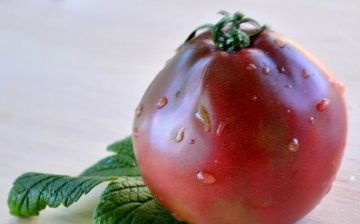
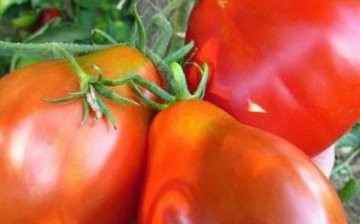
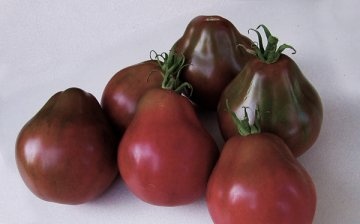
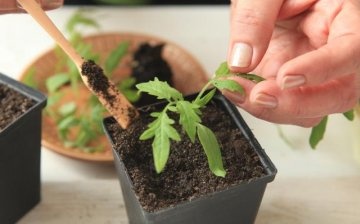
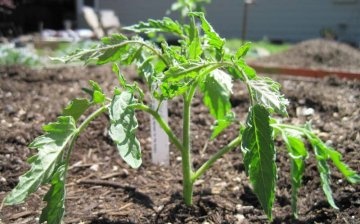
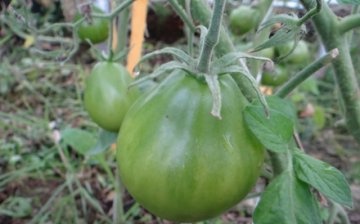







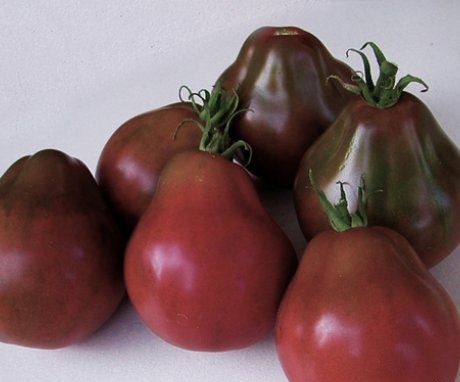

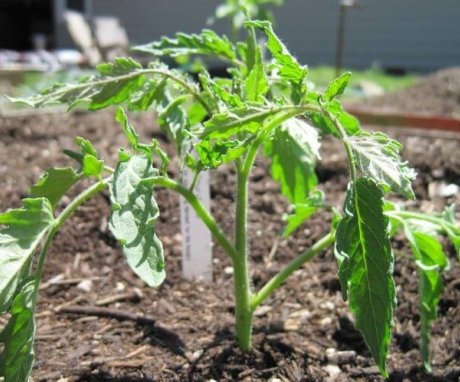
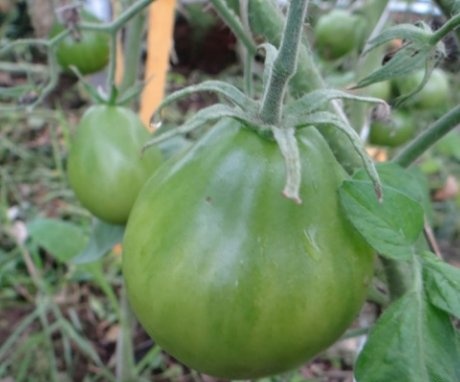
We have grown a pink Japanese truffle. The tomatoes of this variety are very tasty. the bushes were formed into two stems. We tried it at three, but the ripening of tomatoes slows down, the yield too, and the green mass increases.